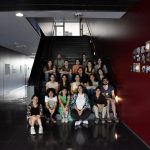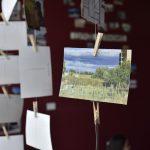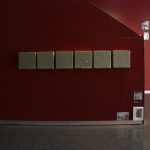PRESS RELEASE:
Mau Monleón Pradas
Curator
Artists
Ana Ferriols Montañana
Anaïs Neveu
The Mediocre
Mireia Coronado Sanchez
Paula Verdú Valero
Sandra Bolufer Ballester
Berta Guixot Blay
Sara Fornés
Alejandro López
Marta Ruiz Anguera
Miquel Falgàs
Alejandra Jiménez
Pedro Sánchez
Josep Sanz Beneyto
Xenia Benítez
Sofia Godoy
Nuria González
Carolina Garrido
Victoria Herranz
María Céspedez Díaz
The exhibition Public Tactics 06 / Ecosystems / Leisure / Citizenship, which is presented in the student’s home, includes a total of twenty-six artists who have worked individually and collectively in the framework of public art, the public sphere and intervention in space public.
Public Tactics 06 belongs to a series of exhibitions curated by Mau Monleón Pradas, whose characteristic is that guerrilla tactics of communication are used to act in the public space. Advertising, drift, psychogeography, fake, sniping, subversive affirmation, deterioration of the image, or collaborative work are some of these tactics that question the notion of territory and propose an ethics from citizenship.
Site-specific interventions have been carried out in the city of Valencia, which in the exhibition are shown as documentation -non-site, covering specific topics ranging from gender violence, the use of inclusive language, ecofeminism and the exploration of nature. , gentrification, the real estate boom and the exploitation of the territory.
It is worth mentioning the collaboration that has been carried out with IDENSITAT through Roser Colomar, who has carried out a workshop that has resulted in the realization of a series of posters dealing with leisure ecosystems.
Leisure is one of the fundamental concepts in our globalized society since all our time is divided into leisure time and work time, and both complement each other, provide mutual feedback, and are economically productive.
The capitalist society is forging an idea of leisure that is fundamentally consumerist and that does not have that it does not treat its free time as such, but it turns it into a programmed time through large surfaces in which to consume, as are the postmodern shopping centers , the spaces destined purely for leisure as theme parks, as well as the events that take place temporarily to occupy spaces.
In this sense, art in general, and public art in particular, plays a fundamental role in the conceptualization and questioning of our leisure society, since art can act in the public space to generate a social revulsion as well as from the activism to model or modify some of our perceptions or behaviors in space and the public sphere.
For example, the situationist concept of drift and also psychogeography is very important, because these two concepts advocated by Guy Debord help us to turn around the perception we have of our programmed leisure time and formulate a meeting space where we can re-exist free play and where you can try again to enjoy a full life, not mediated or scheduled.
The new communication technologies are precisely hindering this enjoyment of free time, constituting a saturation of impulses on our free time that border on addiction and disease mediated by video games, connectivity and hyperconnectivity in social networks.
In this sense, the projects presented here have reacted in a very receptive and sensitive way to all these issues that are structuring our lifetimes.
Some projects are focused on the tourist attractions of the city of Valencia such as the City of Arts and Sciences or the Oceanographic, the promenade and beaches, the historic center and monuments, faults and gastronomy.
Several works focus on gentrification, especially the historic center, but there are also more playful responses that focus on what is the normalization of the use of leisure spaces, in which are the rules that govern these spaces; the prohibitions and the conditions under which these spaces can be used.
There have been drifts in different neighborhoods of Valencia such as Benimaclet or El Cabanyal, and in some of them maps and cartographies have been made of their markets, parks and emblematic places. There has even been a comparison between the number of square meters of recreational endowments that are available in different communities, such as Valencia, which would have 60% less square meters for each Valencian person than a Madrilenian.
Several projects in the exhibition include a feminist and ecofeminist perspective, contributing a gender perspective in all its aspects and in a transverse way.






